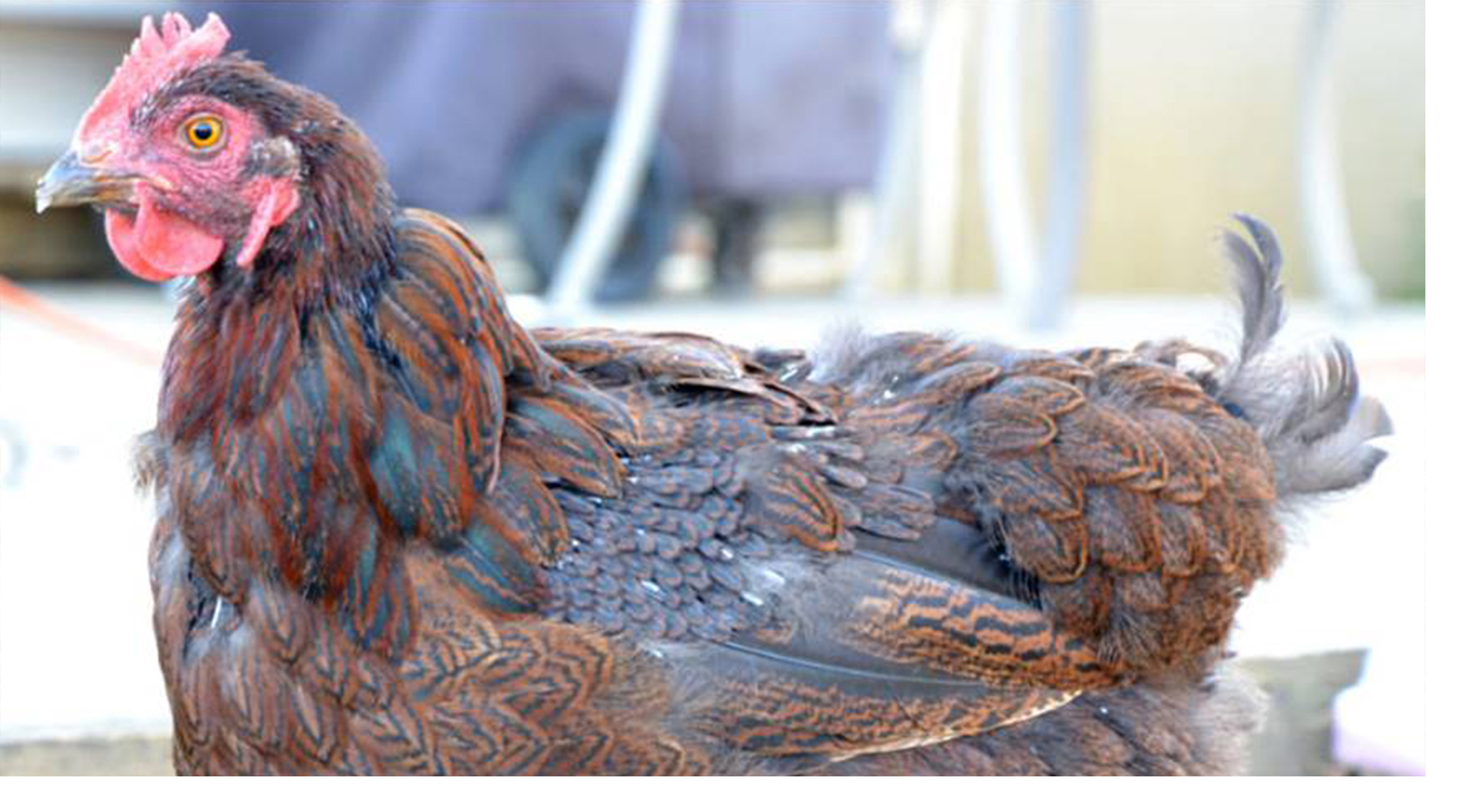

Chickens lose their feathers and regrow them each year in a process called moulting. Shorter day length and cooler temperatures trigger the chickens to moult, usually at the end of the Summer. The chickens will often stop laying during this time, reserving all their energy for the moult itself. Some chickens take 3 to 4 weeks to complete the process, whereas others may take up to 3 or 4 months.

The moult usually occurs in a predictable sequence, starting with the head and neck, moving down the back, across the breast and legs and finishing with the tail feathers. The new feathers, known as pinfeathers or blood feathers, will emerge in the same pattern.
It is important to reduce stress as much as possible during this time and minimise handling, which could potentially be uncomfortable or painful. Avoid introducing new chickens as this may be a potential stressor or a source of illness, to which the moulting chickens may be more susceptible. Other than stopping laying and looking a bit bedraggled, the chickens should otherwise be their normal selves. If they seem unwell during the moult, then it is best to get them checked for any underlying illness.
It is vitally important that the chickens continue to receive high quality nutrition during their moult, even if they have stopped laying. Moulting and growing new feathers takes up a lot of energy. It is important that they receive an optimal supply of vitamins and minerals to get all the nutrients they need to stay healthy during the moulting process. An adequate supply of protein is essential – feathers are 85% protein after all.
Use Life-Guard to ensure nutrient stores are not depleted and to optimally support their systems each time they moult.

NAF © 2024 | NAF is a trading name of Greencoat Limited, registered in England & Wales. Greencoat Ltd - Registered address: Weston Centre, 10 Grosvenor Street, London, W1K 4QY. Registered Number: 1560 108. Registered in England & Wales.Number: 1560108 VAT Registration Number: 378 9295 80